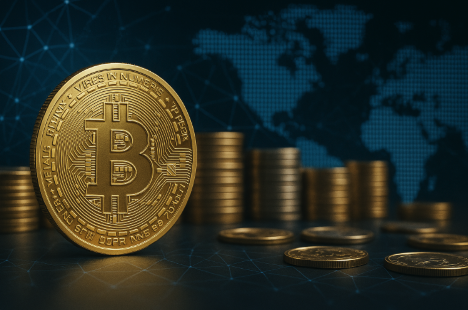In an era where digital assets are becoming an ever-increasing part of the financial world, stablecoins have proved to be a significant innovation in the world of cryptocurrencies. But despite their rise, they also bring with them an ongoing struggle for control over the monetary systems we’ve traditionally known. To understand the role of stablecoins and the fight for monetary control, it's essential to first take a look at what stablecoins are, why they matter, and how they fit into the broader picture of decentralized finance.
A Brief Look at Stablecoins
At their core, stablecoins are digital currencies designed to maintain a stable value, often pegged to a reserve of assets like the US dollar or gold. Unlike traditional cryptocurrencies such as Bitcoin or Ethereum, which can experience extreme fluctuations in value, stablecoins offer the promise of stability, making them more practical for everyday use.
The most widely known stablecoins include Tether, USD Coin, and DAI, which are pegged to the value of the US dollar. Each of these stablecoins has its own mechanism for maintaining that stability, some are backed by actual reserves of fiat currency, while others are algorithmically controlled, automatically adjusting supply to meet demand.
The Struggle for Monetary Control
Stablecoins, by design, are meant to avoid the wild swings that typically characterize cryptocurrencies. However, their very nature poses a challenge to traditional forms of monetary control. For decades, central banks have had the sole authority to regulate the money supply and adjust interest rates to control inflation and stabilize economies. But stablecoins, with their decentralized nature, threaten this monopoly over the flow of money.
In a decentralized system, the creation and control of money lie outside the purview of government institutions. Stablecoins bypass central banks and offer users a way to transact outside traditional financial systems, all without relying on state-backed fiat currencies. This undermines the power of governments to control money supply, interest rates, and inflation. This shift to decentralized money is already happening in some parts of the world.
In Venezuela, for example, the country's citizens have flocked to cryptocurrencies, including stablecoins, to escape the impacts of runaway inflation and currency devaluation. Similarly, in countries like Turkey and Argentina, where inflation is rampant, stablecoins are providing a safe haven for people to protect their savings. That said, when trading stable coins on a platform, it is important to check the platform’s reputation, something that companies like Trusfeed could help with.
Central Bank Digital Currencies and the Battle for Control
As stablecoins continue to grow in popularity, governments around the world are becoming increasingly concerned about losing control over their financial systems. In response, many central banks are exploring the concept of Central Bank Digital Currencies. These digital currencies are essentially the state-sanctioned version of digital money, and they’re designed to maintain the control that governments and central banks traditionally held over monetary systems.
CBDCs are pegged to national currencies, like the US dollar or the euro, and are fully backed by the issuing central bank. In theory, CBDCs would give central banks a way to retain control over monetary policy, while offering some of the efficiency and technological benefits of digital currencies. These government-backed coins would allow for greater tracking and regulation of financial transactions, theoretically reducing the risks associated with the anonymous nature of cryptocurrencies.
Uncertainties with Regulations
In addition to central banks’ concerns about losing control over money, stablecoins present a unique challenge for regulators. As cryptocurrencies operate outside traditional banking systems, they fall into a grey area when it comes to regulation. While traditional assets like stocks or bonds are heavily regulated by governmental bodies, stablecoins, especially those that are not pegged to a centralized asset, are less clear in terms of how they should be regulated.
For example, one of the main questions surrounding stablecoins is whether they should be classified as commodities or securities. Governments like the US have struggled to determine the regulatory framework that should govern these digital assets. In 2021, the US Treasury Department called for greater regulation of stablecoins, citing potential risks to the financial system, especially in terms of systemic risks and consumer protection.
A New Model for Monetary Systems
Despite the struggle for control between decentralized stablecoins and government-backed digital currencies, stablecoins continue to play a massive role in reshaping how we think about money. They allow for faster, more efficient transactions, lower fees, and greater access to global markets. In the long run, stablecoins could offer a solution to some of the flaws in our traditional monetary systems, such as inflation and the lack of financial inclusion.
Final Thoughts
The rise of stablecoins also presents an opportunity for more people to access financial services without relying on traditional banking institutions. In developing nations, where access to banking is limited, stablecoins could offer a way for people to store value and engage in global commerce, without needing a bank account.
